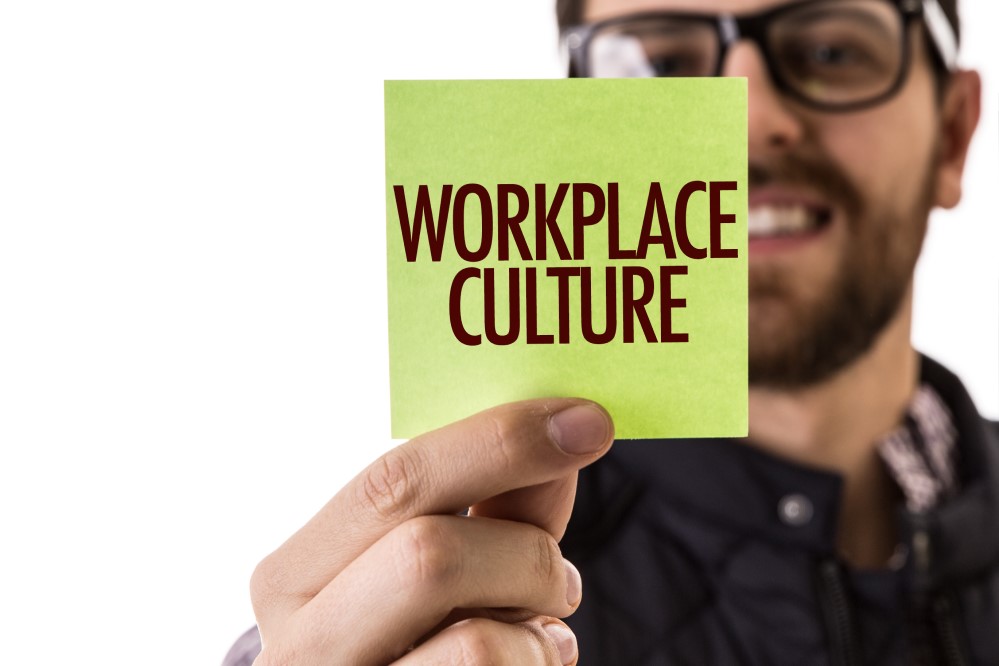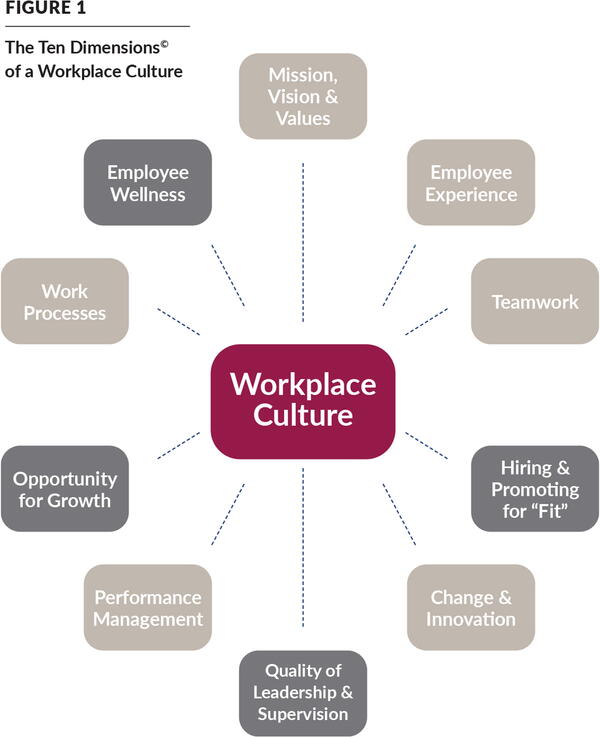
In Part 1 of this series, I focused on the benefits associated with a healthy culture and described the incredible impact derived from implementing a connection culture. In this month’s article, I outline the steps you can take to transition, and possibly transform, your workplace culture from the prevailing to the preferred.
The role of executives, directors, senior managers, and others in a supervisory/management role is unique and has tremendous influence in “setting the tone” of the culture. Employees base what they believe is a priority and what is or is not acceptable on what they observe from those in leadership and management capacities. The influence of leaders and managers is far-reaching toward influencing the culture.
Successful leaders also recognize that although aspirational talk about culture may originate at the executive level, the actual culture manifests itself in cubicles and in the field far from top leaders’ purview. That disconnect makes it essential that top executives do more than just talk a good game.
Changing Workplace Culture
A workplace culture that drove success in the past can become overly codified, rigid, and ritualistic. Over time, bold new moves become much more risky; new service delivery models may compete with existing approaches that threaten their continued application. Even when it’s obvious that change will someday be necessary, it’s not hard to find excuses to put it off just a little bit longer. Unfortunately, when that occurs, organizations can lose touch with reality. As a result, successful leaders will seek to fortify their workplace culture so as to:
- Remain adaptive in a rapidly changing environment.
- Enhance the employee experience.
- Conserve those elements of the culture—the “roots”—that are a source of strength and pride.
- Establish a strong foundation of self-awareness, self-reliance, and a growth mindset of always moving forward.
- Manage the evolution of the organization realistically.
If you really want to change your culture, you’ll need a high level of empathy, great persistence and resolve, rigorous focus, and a practical methodology that brings out the best in your current cultural situation.
It is critical that employees believe the culture change is not an exercise that they are subject to, but a meaningful process in which their involvement is enlisted. Employees must also understand that culture change is not only essential for the organization to adapt to new realities, but also that it will help them and their fellow employees perform their roles better and derive greater job satisfaction.
Before attempting any kind of culture change initiative, the organization’s executives need to know what the current culture is (i.e., prevailing) and how it works, identify what type of culture (i.e., preferred) would best support organizational strategy, and recognize and use the levers that influence culture.
Based on extensive research I’ve conducted and culture change work I’ve completed with my clients, I have developed a Workplace Culture Assessment approach that provides a means of assessing the perceptions of an organization’s employees and managers on the culture and proactively addressing issues of concern in the workplace. It helps determine what is working effectively in an organization and what is not.
Organizational culture is largely driven by leadership, but it also includes a wide variety of other factors, from organizational values and norms to employee behavior. The diagram in Figure 1 indicates the Ten Dimensions© (TD) of a workplace culture that I use in assessing a client’s current culture:

1. Mission, Vision, and Values
Employees understand the organization’s mission and vision and their particular role in their execution. When values are shared among employees, it can unleash their potential. When employees know the context and overarching purpose of their work, they tend to approach it with a clearer sense of individual purpose and meaning.
2. Employee Experience
How do employees feel about where they work? Today’s employee is a consumer of the workplace. Employees are no longer satisfied with clocking in and out and receiving a paycheck. They are looking for meaning in their work; a supportive, collaborative environment; and an employer that can match the lifestyle they want to enjoy. A productive, positive employee experience has emerged as the new contract between employer and employee.
3. Teamwork
Healthy group dynamics are the norm. Employees build and sustain healthy work relationships with peers, direct reports/subordinates, and their supervisor/manager.
4. Hiring and Promoting for Fit
A strong emphasis is placed on hiring and promoting for “fit,” which includes being supportive of the preferred culture and criteria that goes beyond credentials/pedigree and years of experience. High-performing employees want to work in a performance-based, promotional workplace.
5. Change and Innovation
Change and innovation are discussed frequently among employees and pursuing improvements to current operations, services, and programs is supported. Change management is not an event, but instead is a process that is inclusive and collaborative. Moreover, the organization has a proven track record of successfully implementing change initiatives that have resulted in positive impacts. Mistakes are tolerated in the pursuit of identifying innovative solutions.
6. Quality of Leadership and Supervision
Leaders “traffic in trust” and are credible and influential. Leaders need to be perceived as caring about their people’s success, seeking to understand each person’s strengths, and providing employees with every opportunity to use those strengths. Great managers empower their employees by creating and sustaining a trusting working partnership.
7. Performance Management
An effective performance management/appraisal system is being used. The process for setting goals, providing meaningful and timely feedback, and holding employees accountable is essential. There’s no substitute for a well-designed and well-executed performance management process.
8. Opportunities for Growth
Employees are encouraged to grow, learn, and pursue their potential. A relic from a bygone era is that “if we train employees they might leave.” I turn that around and offer, what if you don’t and they stay? No employee should ever have to apologize for being ambitious and no one should ever get in the way of a person pursuing their dreams.
9. Work Processes
Modern work processes are symbolic of a mindset of people who choose to not be satisfied with the status quo. Discarding antiquated work processes are proactively pursued absence a crisis.
10. Employee Wellness
Employees feel like the organization cares about them—financially, emotionally, mentally, and physically—and applies resources to demonstrate such a commitment.
Employees are asked questions about these dimensions and their responses are gathered via various channels and evaluated to determine themes and the basis of the prevailing workplace culture. Organizations that effectively change their cultures are successful because they are renovating what they have, not starting from scratch and completely rebuilding.
I have partnered with leaders of many local governments assisting with their culture change efforts. Careful attention must be paid in these efforts as any attempts to change it may “collide” with the existing culture and the status quo can prevail. Remember, not everyone is for progress, especially those employees who stand to gain the most by maintaining the status quo.
You can be certain that there will be resistance to culture change. But readiness for organizational transformation can be fostered by identifying the advantages of the refreshed culture, sharing the disadvantages of not changing, showing the gaps between current performance and the organization’s potential, providing the resources needed to implement change, and rewarding behaviors compatible with the preferred culture.
Making It Happen
Culture change takes place by implementing a series of solutions. Here is a sample:
- The change process must be assigned to a group of staff who have credibility in the minds of those being the most impacted. Every organization has a pool of change agents that usually goes untapped. These people are viewed as a network of positive energizers and “key influencers.” Spread randomly throughout the organization, these are purpose-driven people with an optimistic orientation. They naturally inspire others. They’re open and willing to take initiative. Once enlisted, they can assist with every step of the cultural change.
- Reaffirming and/or revising the current set of organizational values with a specific emphasis on identifying specific behaviors that exemplify the connection culture must be pursued.
- A formal training program is one of the most effective development techniques to equip executives, managers, and those who aspire to serve in such a role with the capabilities of being a successful leader. A training program can offer structured learning experiences that apply directly to their roles. The general purpose of training involves knowledge and skill acquisition and will have three goals: (1) to improve an individual’s level of self-awareness; (2) to increase an individual’s skill in one or more areas of expertise; and (3) to increase an individual’s motivation to perform his or her job well.
- Hold quarterly training sessions for the entire group of leaders, managers, and supervisors. Convening this group periodically generates several dividends—it increases a sense of belonging to the organization at large and provides learning opportunities about their role in moving the workforce forward.
Understandably, culture change can be difficult and challenging work, yet the dividends are extremely beneficial in helping transition or even transform an organization to achieve unprecedented results. Since culture change is a continuous process, the work to support culture change will be ongoing. It will be slow and trying before it is rewarding.

PATRICK IBARRA and his consulting firm, the Mejorando Group, are passionate about unleashing human potential (patrick@gettingbetterallthetime.com).
New, Reduced Membership Dues
A new, reduced dues rate is available for CAOs/ACAOs, along with additional discounts for those in smaller communities, has been implemented. Learn more and be sure to join or renew today!
